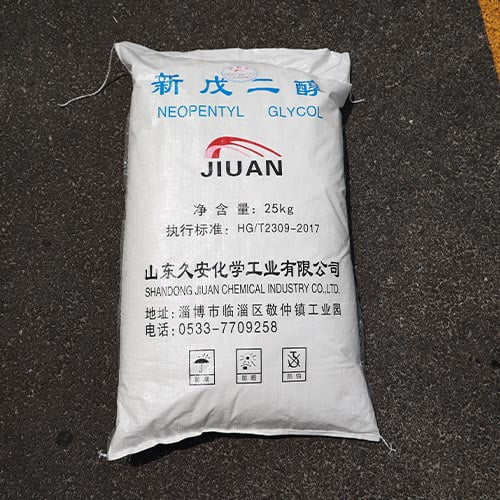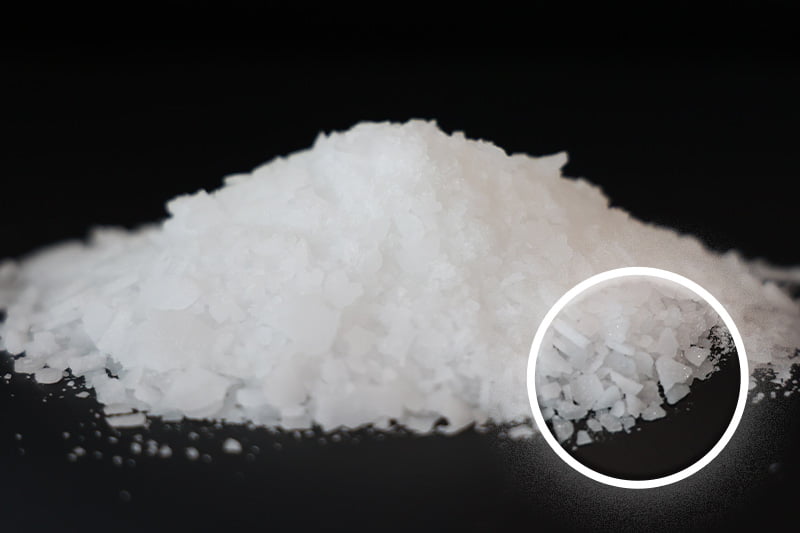Introduction
In the realm of industrial chemistry, the utilization of neopentyl glycol methyl ester has emerged as a game-changer, offering a plethora of innovative applications across various processes. This article delves into five groundbreaking uses of neopentyl glycol methyl ester, exploring its versatility and impact in industrial settings.
Advanced Coating Formulations

Neopentyl glycol methyl ester plays a pivotal role as a key ingredient in the formulation of advanced coatings, contributing significantly to their superior quality and performance characteristics. Its inclusion in coating formulations is not merely incidental but rather strategic, owing to its unique chemical properties that impart a multitude of benefits.
First and foremost, neopentyl glycol methyl ester offers exceptional durability to coatings, ensuring long-lasting protection against various environmental stressors such as UV radiation, moisture, and abrasion. This enhanced durability translates into extended service life for coated surfaces, minimizing the need for frequent maintenance or recoating.
Moreover, the adhesive properties of neopentyl glycol methyl ester are instrumental in promoting strong adhesion between the coating and the substrate. This strong bond helps prevent delamination or peeling, even under challenging conditions, thereby ensuring the integrity and longevity of the coated surface.
Additionally, neopentyl glycol methyl ester contributes to superior weather resistance in coatings, making them suitable for outdoor applications exposed to harsh climatic conditions. Whether it’s automotive finishes enduring extreme temperatures, aerospace coatings facing high-altitude exposure, or architectural coatings enduring fluctuating weather patterns, the weather-resistant properties of neopentyl glycol methyl ester provide reliable protection against deterioration and degradation.
Eco-Friendly Solvent Replacement
Neopentyl glycol methyl ester boasts a paramount advantage rooted in its eco-conscious characteristics, positioning it as a frontrunner in sustainability within the chemical industry. Its distinction as a non-VOC (volatile organic compound) solvent represents a pivotal departure from conventional solvents, heralding a new era of environmental responsibility and stewardship.
Central to its eco-friendly profile is its ability to mitigate environmental impact without compromising efficacy across a spectrum of industrial applications. Unlike traditional solvents laden with volatile organic compounds that contribute to air pollution and pose health hazards, neopentyl glycol methyl ester offers a greener alternative, devoid of harmful emissions or adverse health effects.
Its versatility extends beyond its role as a solvent, finding utility in diverse industrial processes such as cleaning, degreasing, and paint formulation. In the realm of cleaning and degreasing, its efficacy in dissolving contaminants and removing residues underscores its suitability for maintaining cleanliness and hygiene in industrial settings while adhering to stringent environmental standards.
Furthermore, neopentyl glycol methyl ester’s compatibility with paint formulation opens avenues for sustainable innovation in coatings and finishes. By serving as a solvent or coalescent agent, it facilitates the dispersion of pigments and binders, ensuring homogeneous mixtures that yield high-quality coatings with enhanced durability and performance.
High-Performance Adhesives
Within the adhesive technology domain, neopentyl glycol methyl ester stands as a cornerstone in the quest for high-performance adhesives, revolutionizing the landscape with its multifaceted advantages and versatile applications.
At the core of its significance lies its remarkable compatibility with an extensive array of substrates, ranging from metals and plastics to composites and ceramics. This broad compatibility profile not only expands the scope of potential applications but also streamlines adhesive selection processes, offering greater flexibility and convenience to manufacturers across diverse industries.
Moreover, neopentyl glycol methyl ester’s superior bonding strength sets it apart as a preferred choice for demanding applications where reliability is non-negotiable. Whether it’s bonding dissimilar materials in construction projects, assembling intricate electronic components, or securing critical components in automotive assemblies, the adhesive’s robust bonding capability ensures structural integrity and longevity under varying operational conditions.
Enhanced Polymer Production

Neopentyl glycol methyl ester stands as a fundamental building block in the synthesis of cutting-edge polymers, offering a pathway to materials with finely tuned properties designed to meet the exacting demands of modern industries. At the heart of its contribution lies its distinctive molecular structure, which affords researchers unprecedented control over the architecture of resulting polymers.
This control allows for the precise manipulation of polymer characteristics, including strength, flexibility, and chemical resistance, paving the way for materials that excel in diverse applications. In the realm of packaging, for instance, polymers derived from neopentyl glycol methyl ester form the backbone of high-performance packaging solutions. These materials boast exceptional strength, ensuring the protection of goods during transit, while also offering flexibility to accommodate varying shapes and sizes of products. Additionally, their chemical resistance makes them ideal for packaging sensitive contents, such as food and pharmaceuticals, safeguarding their integrity and freshness.
Sustainable Lubricant Additive
The incorporation of neopentyl glycol methyl ester as a lubricant additive offers a sustainable solution for improving the performance and longevity of machinery and equipment. By reducing friction, wear, and energy consumption, this compound enhances operational efficiency while minimizing environmental footprint, making it a preferred choice in industrial lubrication systems.
| Benefits | Description |
|---|---|
| Improved Performance | Neopentyl glycol methyl ester reduces friction and wear between moving parts, leading to smoother operation and prolonged machinery lifespan. |
| Enhanced Operational Efficiency | By minimizing friction and energy consumption, this compound enhances the overall efficiency of machinery and equipment, resulting in reduced downtime and increased productivity. |
| Sustainability | The use of neopentyl glycol methyl ester as a lubricant additive offers a sustainable solution, contributing to environmental conservation by reducing emissions and resource consumption. |
| Reduced Environmental Footprint | Neopentyl glycol methyl ester helps minimize the environmental footprint of industrial lubrication systems by promoting energy efficiency and extending equipment lifespan. |
Conclusion
In conclusion, neopentyl glycol methyl ester stands out as a versatile and sustainable ingredient with immense potential across various industrial processes. Its innovative applications in coatings, solvents, adhesives, polymers, and lubricants underscore its significance in driving efficiency, performance, and environmental responsibility in modern manufacturing.
FAQ
What are the key properties of neopentyl glycol methyl ester?
Neopentyl glycol methyl ester exhibits excellent solvency, low volatility, and high chemical stability, making it suitable for a wide range of industrial applications. Its low odor and low toxicity profile further enhance its usability.
How does neopentyl glycol methyl ester compare to traditional solvents in terms of environmental impact?
Unlike traditional solvents, neopentyl glycol methyl ester is non-VOC (volatile organic compound) and biodegradable, significantly reducing its environmental footprint. Its use aligns with sustainability goals and regulatory requirements for minimizing emissions and promoting green chemistry practices.
Can neopentyl glycol methyl ester be customized for specific industrial applications?
Yes, neopentyl glycol methyl ester can be tailored to meet specific performance requirements in various industrial processes. By adjusting its molecular structure and composition, manufacturers can optimize its solvency, viscosity, and other properties to suit specific application needs.
What are the safety considerations associated with handling neopentyl glycol methyl ester?
While neopentyl glycol methyl ester is generally regarded as safe when handled properly, it is important to observe standard safety precautions. This includes wearing appropriate personal protective equipment (PPE), ensuring adequate ventilation in work areas, and following established guidelines for storage, handling, and disposal.
Are there any regulatory restrictions or guidelines governing the use of neopentyl glycol methyl ester in industrial processes?
Regulations regarding the use of neopentyl glycol methyl ester may vary depending on geographical location and specific applications. It is advisable to consult relevant regulatory authorities and adhere to applicable guidelines, standards, and safety protocols to ensure compliance and mitigate potential risks.



